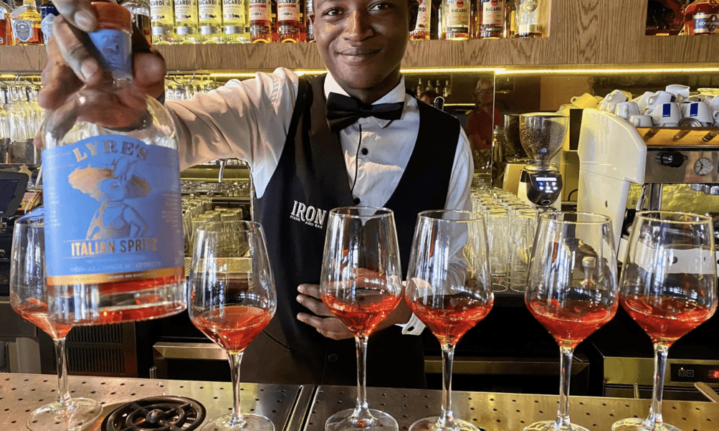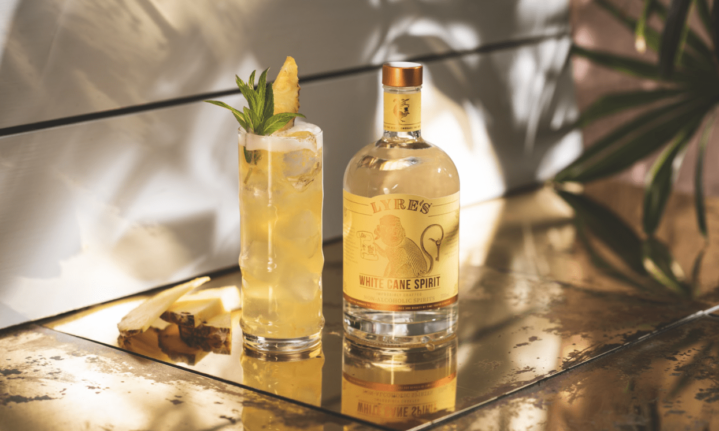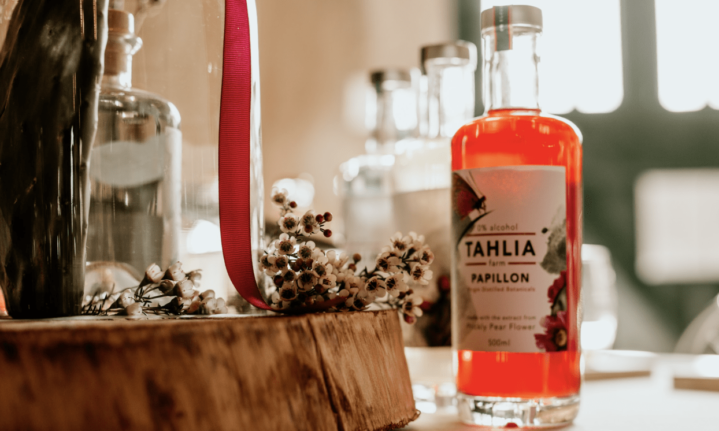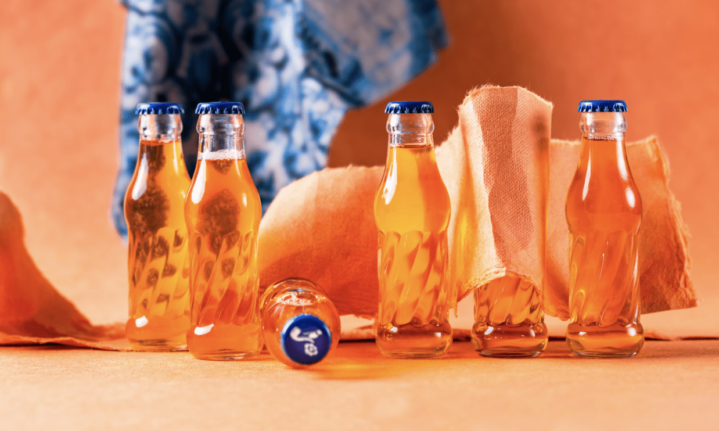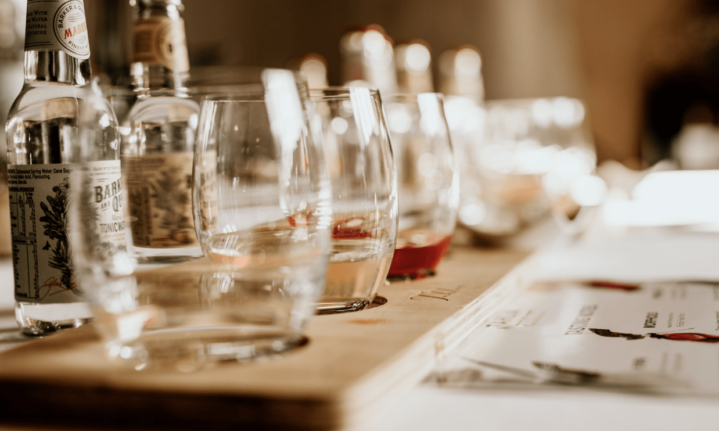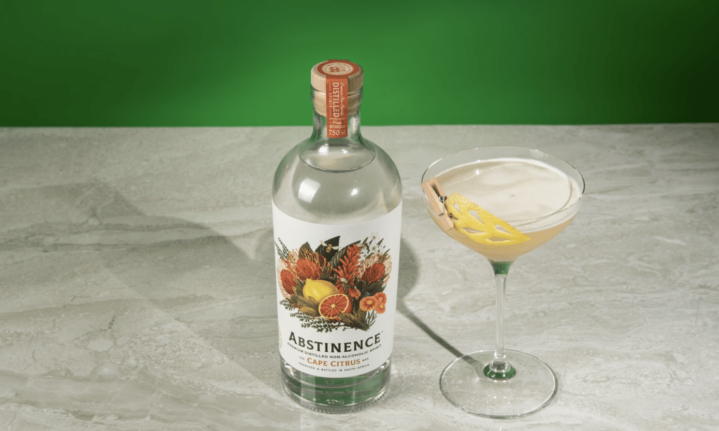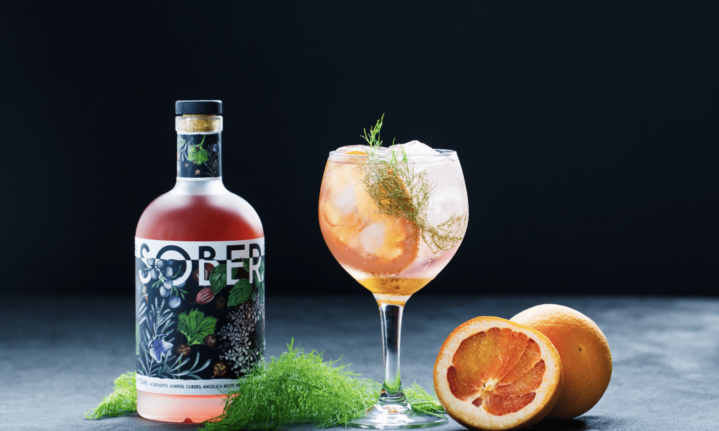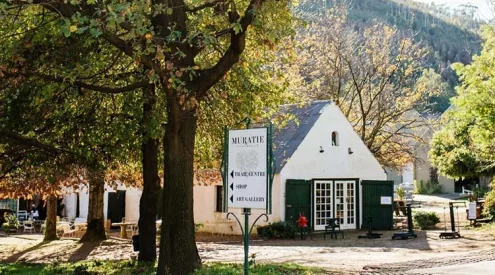Ocsober and Dry January are all good and well, but how about a permanent shift to sobriety? Keith Bain reflects on the rise of the sober curious.
No doubt, many of the world’s legendary drunks are turning in their graves. Many of them were fierce and formidable writers. Heroically intoxicated scribes like Hunter S Thompson and Tennessee Williams, Hemingway and Kerouac, Truman Capote and James Joyce. Essentially my heroes. Bless them all, but this is a story set in a brave new world, one in which boozing is on the decline, and – heaven help us – we have already seen all sorts of manifestations of hashtaggable trends such as “sober curious” doing the rounds.
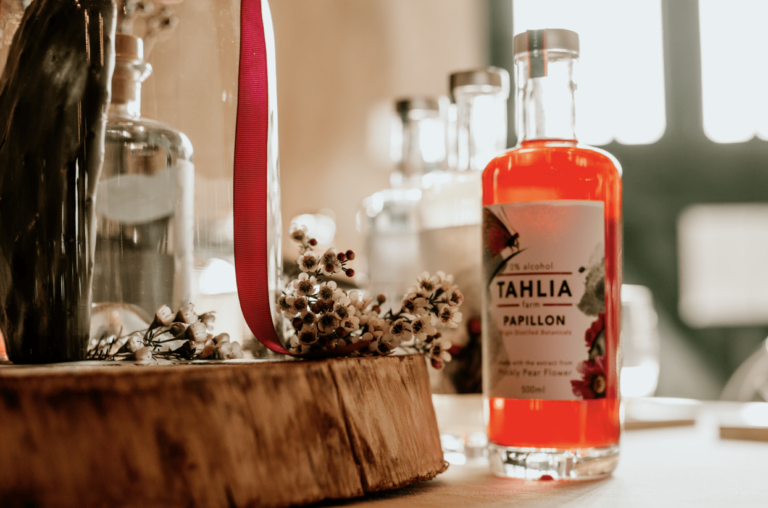
In fact, Sober Curious is the title of a six-year-old book chronicling the rising phenomenon of consciously choosing not to drink alcohol – at least not all the time. In its wake, there’ve been legions of people appending #mindfuldrinking to pictures of themselves sipping New Age elixirs and ripping up the town despite being completely level-headed.
Because, believe it or not, it’s now perfectly fine – socially acceptable, even – to decline that drink.
This may or may not have anything to do with virtuosity, but in a country where it has almost always been borderline cringeworthy to admit that ‘I don’t drink’, there’s growing evidence that young people (call them Gen Zs, or TikTokers, or whatever) are moving on from alcohol as the main medium for their respite from reality.
The North American alternative culture magazine, Vice, posted the following on Instagram: ‘Ketamine, weed and mushrooms are doing just fine, apparently. But alcohol? It’s in the midst of a PR crisis… According to a 2022 survey, 26% of 16- to 24-year-olds in Britain are now “fully sober”. In August, a study found that almost a third of all pub visits are now booze-free. This isn’t anything new either: the non-alcoholic drink market has grown by more than 506% since 2015 and Google searches for “sober curious” peaked in 2021 following the pandemic. Also, when last did you see a TV show or hear a song that glamorises drinking the way pop culture used to?’
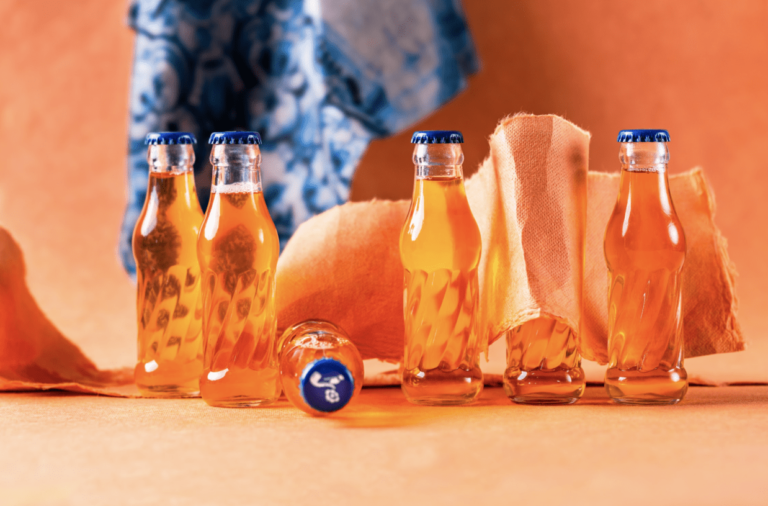
Vice speculates as to the causes of this turn-around. Among the observations is mounting evidence that ‘people are overworked and underpaid’. That may be as much an understatement as ignorance of more ancient times when peasants did nothing but toil, but it is nevertheless indicative of a fast-changing world. The consequence of this beleaguered reality is that folks ‘don’t have time for hangovers because every free moment has to be funnelled into two or three side hustles’.
Other possible causes for the lapse into sobriety? Well, there is a new generation of people who ‘prefer being online’ and are ‘anxious’, says the report.
Still, when it all comes down to it, Vice claims, the single most significant factor is that ‘getting trashed simply isn’t cool anymore’.
Certainly, many young people are turning to other vices, more reliable means of coping with their stresses and anxieties. But there has also been a rise in consciousness about health, fitness, and communing with nature. Much of this turnaround has transcended generational boundaries, too, a notable shift prompted by the pandemic, when swathes of middle-aged people were suddenly alerted to the vulnerability of their immune systems.
I gave up the sauce over a decade ago, a New Year’s resolution I actually stuck with. As I tell anyone who asks, ‘Why?’ I did enough boozing in my first three decades. Subtract the first 12 years, when I barely touched the stuff, and that means for at least 18 years I spent a lot of time, money and energy on alcohol. Then I moved on. I have other interests, is all.
I don’t consider myself “sober” since terms like “sobriety” have always been reserved for people dealing with dependency issues or former heavy drinkers in “recovery”.
Quitting was an act of self-preservation. Because, when I drank, I drank a lot. And frequently. Somewhere in my mid-30s, though, I figured out that – for my personality type – abstinence was the more responsible choice.
I wanted to spend more of my time fully conscious and fewer of my mornings drifting around in a bleary-eyed fug.
I refused to drink alcohol, but what was there instead? The beverage landscape was pretty bleak. Back then, alcohol-free beer tasted like flat lemonade.
It would be several years before Johannes le Roux came up with a Cape Town-based alcohol-free botanical tonic that satisfied hangover-free cravings for gin and tonic.
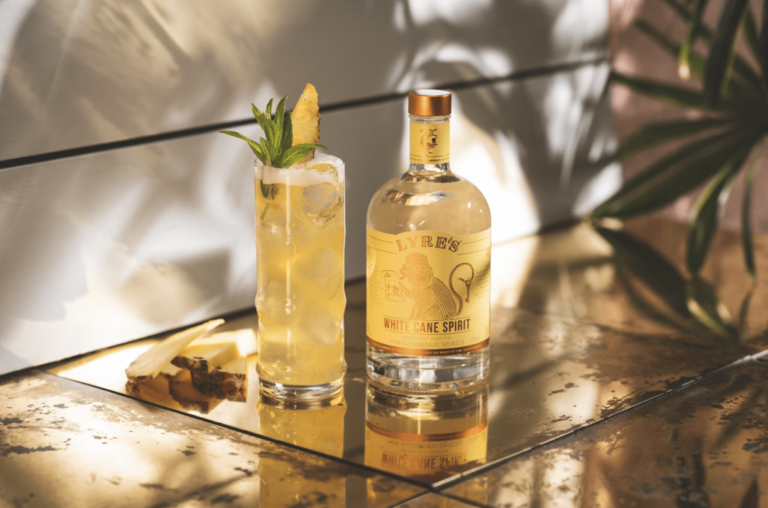
Le Roux had previously developed a pre-mixed brandy-and-Coke range called Brannas Draught, and after selling that enterprise discovered a burgeoning alcohol-free trend during a research trip to the Netherlands.
The Duchess, which Le Roux developed with help from a botanist aunt and food technologists, was the first South African foray into booze-free spirits, and when it launched in 2015, sold a million units; by 2020, it had gone international and – in part thanks to the pandemic – the market for high-performing non-alcoholic spirits was soaring.
According to IWSR’s 2022 “No- and Low-Alcohol Strategic Study”, the value of these beverages (in Australia, Brazil, Canada, France, Germany, Japan, Spain, Britain, the US and South Africa), grew from $7.8 billion in 2018 to just under $10 billion in 2021. Researchers reported that some 43% of adults had tried drinks from this rapidly emerging sector, one that is said to be experiencing an 8% growth rate each year.
The good news is that beverage makers are making it less of an ordeal, too.
Abstaining may be the new black, but it does not mean sitting at home knitting while your boozy friends are hitting the town. Water’s wonderful and soda water with a dash of lime is fine, but what about that craving for something strong? If anything will put you off not drinking it’s being faced by a syrupy-sweet virgin cocktail.
These days local mixologists barely blink if you ask for a sharp-tasting drink free of alcohol. Not in cosmopolitan Cape Town, at least. Kimberley might be a different story.
That they can achieve such drinks is thanks to a burgeoning variety of zero-alcohol spirits that have followed in the wake of Seedlip, which was the world’s first distilled non-alcoholic spirit, launched in 2015. To produce this upmarket, all-natural drink, Ben Branson tinkered in a kitchen in the English countryside, using a small copper pot still and a 1651 tome titled The Art of Distillation that documents distilled non-alcoholic herbal apothecary remedies.
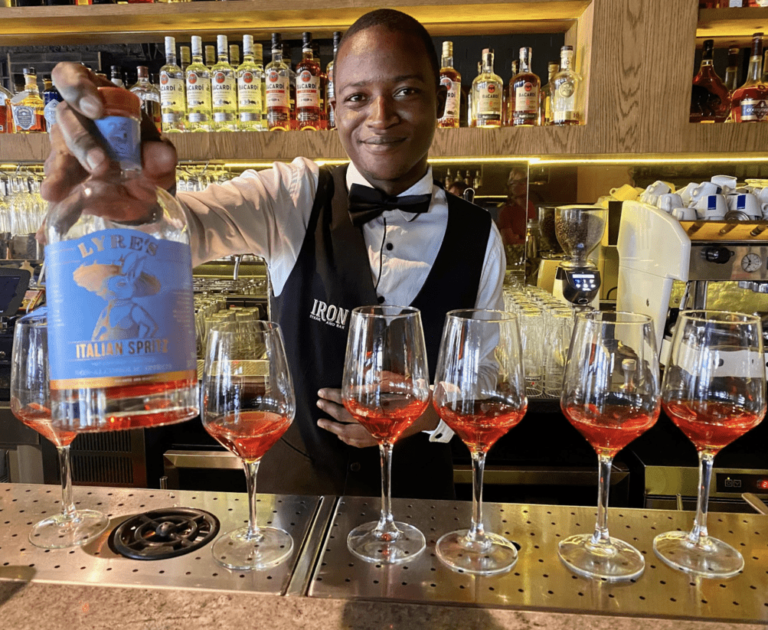
It’s taken off in South Africa, too. Alongside local non-alcoholic spirits such as VerGin, Saint, Mahala and Ginifer Sober, there’s been a swathe of new-to-market options. In 2021, Cape Town’s Simone Musgrave added alcohol-free Inspirit to her range of craft gins; it’s described as ‘an aromatic, alcohol-free infusion made with 12 rare botanicals inspired by the ancient spice route of Africa’. Those spices and botanicals include cardamom and juniper, African ginger, lime, and grains of paradise.
So these are definitely not cool drinks. And they are a far cry from the swill being sold as dealcoholised wine, which has about as much personality as a flat, warm Coke – none of the mouthfeel, nor that distinctive “edge” that a proper, grown-up drink has when it meets your palate.
The thing is, it’s precisely that edge – a tongue-smacking mysterious something that produces that “gnah” taste in your mouth – that we grown-ups are looking for.
Someone who understands this quest for a strong flavour in an alcohol-free drink is Nic Jooste, who says he tried to capture the taste of the African bush – of Kruger specifically – when he developed his Selati range of non-alcoholic spirits, which he named after the Ga-Selati River that runs through the national park.
South African-born Jooste, who lives in Europe, visited Kruger for the first time in 2021 and became obsessed with the flavours, smells, sunsets, sunrises and wild herbs. ‘I was already intrigued by the worldwide growth in no- and low-alcohol beverages,’ he says. ‘The idea of infusing the flora and flavours of Kruger into a non-alcoholic spirit took hold of me, so I put together a team of cocktail and taste gurus, and off we went on this adventure.’
Jooste says he entered the market at just the right time, in what is the fastest-growing beverage segment globally.
Although the spirits are not yet available in South Africa because of naming rights issues, within four weeks of launching Selati in Europe, it was on menus at more than 20 of the top bars and restaurants in The Netherlands; that number has more than doubled since, and interest in the range has quickly gone global.
In one of their video commercials for these spirits, Selati is referred to as ‘Magtig, kragtig, pragtig’ (powerful, strong, beautiful), a description that’s set to footage of wildebeest herds fording rivers and elephants trumpeting as they hotfoot it across the African plains.
The idea is that an African thirst is like no other, and requires something just as powerful to slake it.
What you don’t necessarily want, though, is the aftermath of bitter regret, the possible bleary eyes and frown at that point in the evening where you can’t exactly remember how you got where you ended up.
Perhaps not such a bad time to be curious.
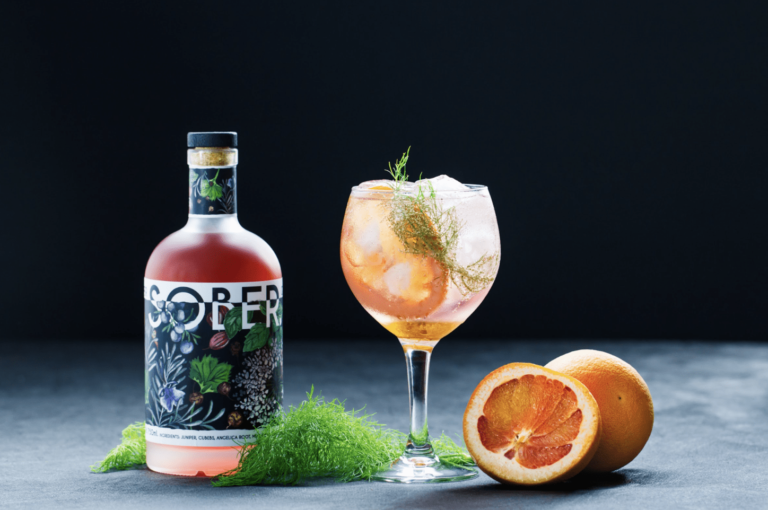
Sober tipples
Abstinence
All the punch, none of the aftermath – there are now a handful of variants under this smart local label. Abstinence Cape Citrus is citrusy and blended with local botanicals, notably buchu, and also pepper and fennel. Abstinence Epilogue X makes a perfect non-alcoholic Old Fashioned, and is produced using smoked, peated and blended malts, oak, honeybush, vanilla, cassia, cardamom, clove and impepho. And they have a pair of zingly apéritifs, one lemon, one blood orange, made with buchu, aloe, African wormwood, cinchona bark, quinine and spices. They’re both perfect for a spritz. abstinencespirits.com
Ceder’s
Made by a South African-Swede using a juniper base with botanicals that grow on their farm in the Cederberg, this distilled non-alcoholic alt-gin is blended and bottled in Sweden using spring water. It comes in three formulations: Classic (juniper and coriander with hints of geranium and Cape floral fynbos); Crisp (juniper, cucumber and camomile); and Wild (juniper, cloves, ginger and rooibos). ceders-alt-gin.com
Ginifer Sober
From Joburg’s Angel Heart Distillery, it’s made with a traditional botanical mix of juniper berries, coriander seeds, orris, angelica, pepper and garden mint, the final product is enhanced with either lime leaves or hibiscus tea to produce two varieties: Dry and Hibiscus. yuppiechef.com
John Ross Virgin Distilled Botanicals
An amber-hued spirit made in Paarl by the creator of Barker and Quin tonics, this classic non-alcoholic gin is made by distilling and blending botanicals and then infusing it with honeybush tannin. yuppiechef.com
Lyre’s
Named for an Australian bird able to mimic any sound it hears, this dynamic brand has quickly dominated the global market with its non-alcoholic spirit substitutes. They make everything from dry gin-like spirits to something resembling tequila, plus coffee liqueurs and aperitifs, all mass-produced in the UK with an eye on cornering the booze-free cocktail market. lyres.co.za
Mahala Botanical
A triple-distilled spirit incorporating nine natural botanicals: clove, honeybush, angelica root, buchu, cassia bark, peppercorn, orange, cardamom and pelargonium citronella. Apart from having no alcohol, it is also sugar-free. mahalabotanical.com
Musgrave Inspirit
A non-boozy addition to a range of artisanal spirits produced in Cape Town, this rosewater-infused crafted spirit takes flavour inspiration from the African spice route. musgravespirits.com
Saint G&T
‘One can’t be half, part or semi-virgin,’ say the manufacturers of Mzansi’s first non-alcoholic gin, said to be inspired by the microclimate of the Olifants River. Made with re-distilled juniper in small hand-bottled batches, it’s free of artificial colours, flavours and sweeteners. It’s also calorie-free and yet still has that flavour kick – ‘the bracing bite of a traditional icy G&T’ as its makers say. qualito.co.za
Seedlip
Launched in November 2015, it comes in three different expressions – Spice 94, Garden 108 and Grove 42 – and is served in 150 Michelin-starred restaurants as well as top cocktail bars, hotels, and retailers. This is a sophisticated zero kilojoules, sugar-free, sweetener-free and artificial flavour-free drink. seedlipdrinks.com
Tahlia
On a farm between Montagu and Barrydale, three “non-alcoholic distilled botanicals” were launched in 2022. They’re named Pupa, Morphous and Papillon and each captures a different dimension of flavour produced by the prickly pear. tahliafarm.co.za
Vermont VerGin
Looks like gin, is served like gin, and makes the perfect virgin G&T, free of additives, artificial sweeteners and faux flavours. It’s made from natural botanicals – extracts of juniper, coriander, cardamom and angelica– grown on an organically certified farm in the Overberg. In 2022 it was named “Best Global Non-Alcoholic Beverage Brand” at the Corporate Live Wire Innovation and Excellence Awards in London. Not bad for a drink spawned by a little village in the Overberg. verginsa.co.za
A version of this article appeared in the January 2023 print issue of Getaway
Words by Keith Bain
Photography by Bianca Coleman
Follow us on social media for more travel news, inspiration, and guides. You can also tag us to be featured.
TikTok | Instagram | Facebook | Twitter
ALSO READ: Show me the honey: Beekeeping in KwaZulu-Natal









